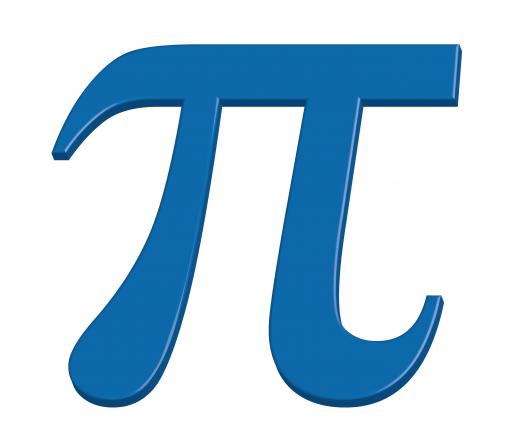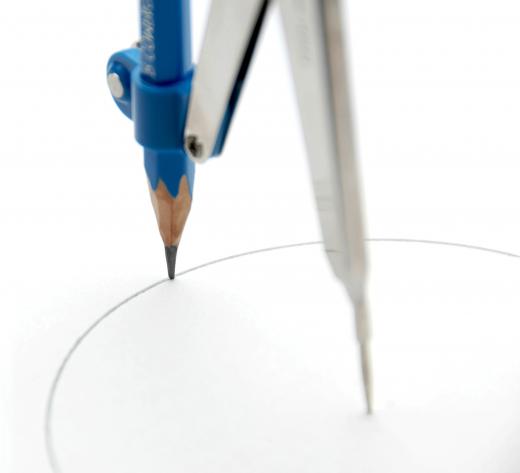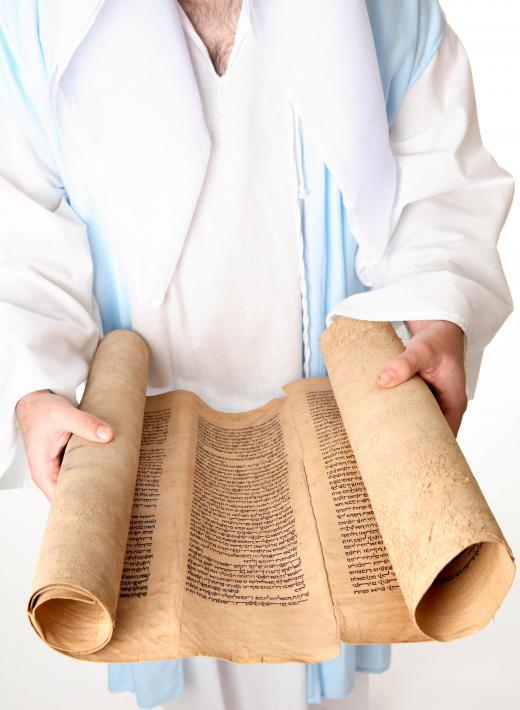What is the History of Pi?
 Tricia Christensen
Tricia Christensen
Pi, given its name after the Greek letter, was not named so by the Greeks, nor did they invent the concept. It is true that the Ancient Egyptians first discovered the number, and there are references to a number in an Egyptian scroll dating to 1650 BCE. The scroll was authored by a writer named Ahmes, and refers to several mathematical formulas, among them a rough approximation of how to calculate the area of a circle using a number that would translate in modern terms to 3.1604.
It wasn’t until about 200 BCE that the Greeks became conscious of pi, and as stated they did not give it that name. Archimedes approximated it in about 200 BCE in fraction form, since the Greeks did not yet use decimals. He expressed pi as a fraction similar to 3 1/7, which is in decimals approximately 3.14.

Mathematicians and scientists left pi at Archimedes’ calculation for centuries. Interest in this number that makes sense, yet never ends, surged again in the late 16th century. Ludolph Van Ceulon dedicated a great deal of his life to researching pi, and his book On the Circle (Van den Circkel) repeated Archimedes’ methods. He calculated the number to 35 decimals, and later the number was named for him and called the Ludolphian Number.

It wasn’t until the early 18th century that 3.14159… would receive its current appellation. The trend may have begun with William Jones, a Welsh mathematician. He suggested the number be called by the Greek symbol for the letter pi, Π. This tradition was popularized by other mathematicians, and it stands today.
The number itself is harder to explain than its history. It is an irrational number, with no apparent end and no sequence or pattern to its decimal digits. Even though irrational means it can’t be expressed in fraction form, in rough estimates, it can be written as 22/7. A circle’s circumference in ratio to its diameter is essentially Π. Therefore if you wanted to understand whether a circle was nearly perfect, you’d divide the circumference by the diameter (the width of a circle) to achieve the number.

Since pi has been defined to a degree, it has numerous applications in geometry. Area of a circle is calculated using the formula Πr2. Perimeter of a circle is Πd or Π2r. Yet any formula that utilizes the number has the basic assumption that you can only arrive at an approximate understanding and never get a true answer. You can get a fairly good approximation, especially as you extend the number of digits of pi used in formulas. For most purposes in beginning math, students use 3.14 to get an estimate of perimeters or areas of circles.
AS FEATURED ON:
AS FEATURED ON:














Discussion Comments
Europeans write dates with the day preceding the month, so they celebrate Pi day on 31/4, the 31st of April.
Did you know that in 2015, on Pi day, it would be 3-14-15? Which is 3.1415, the first 5 digits of Pi. Cool right?
Write 3.14 on a piece of paper and then look at it in the mirror!
March 14th is Pi Day. This is for obvious reasons, since it is 3/14. People generally celebrate this holiday by eating round pies!
Some people find it useful to memorize pi. This can be a helpful tool for mathematics, but more often than not it is an endeavor taken for the sake of impressing friends and fellow mathematicians.
The Greek letter is not pronounced in the same way as the mathematical formula "pie." The letter is pronounced more like "pea," much different than our silly English version.
There are certain equations and shapes which recur throughout the whole world. Pi is one of these recurring forms, and like the earth, is infinite in its mystery and nuance. Science has only begun to tap into the depths of all the things there are out there to be discovered. Don't be fooled by any professor or smartypants who claims we have everything figured out, we are very very far from it.
Post your comments